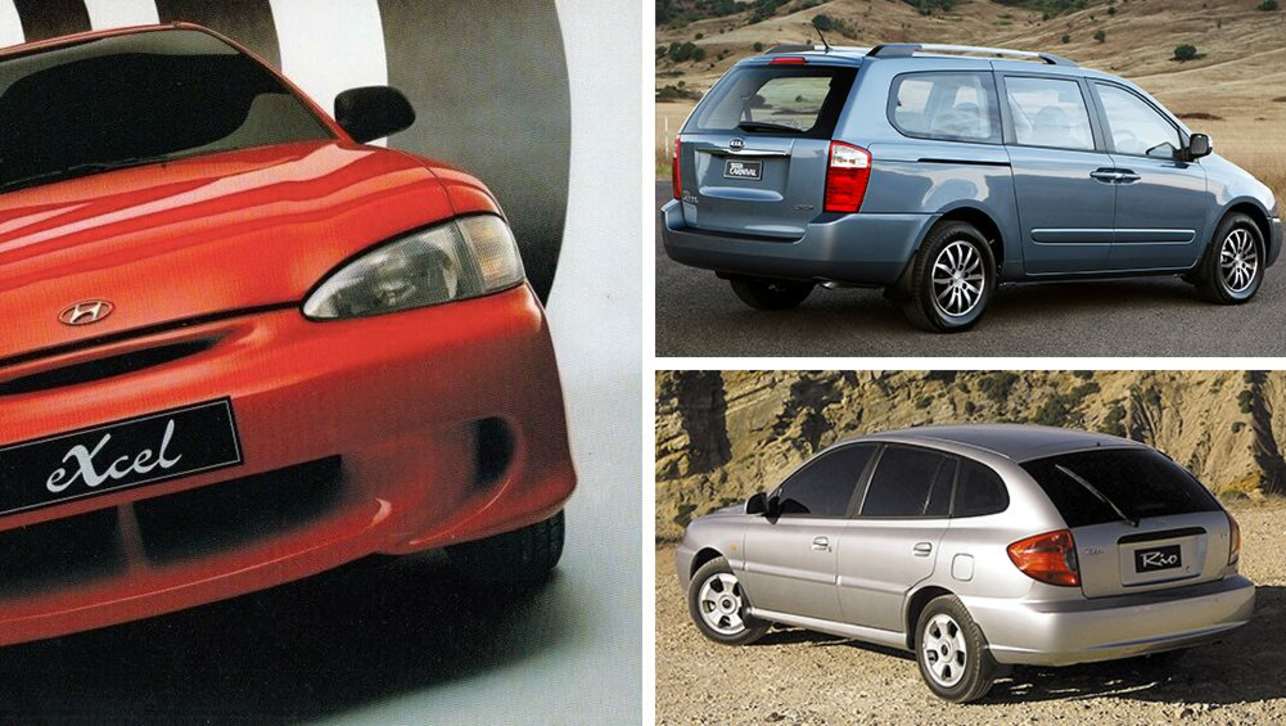Remember when Hyundai and Kia were all about low prices (and immediate delivery)?
Today, the closely-related Korean brands are riding higher than ever, with strong demand reflecting their massive strides in quality, technology and design.
More than that, though, Hyundai and Kia have gone from dependable to desirable, and only within the past half-decade, setting the pace in electric vehicles (EVs), breaking styling conventions across the board with models like the Ioniq 6 and next-gen Hyundai Santa Fe, and targeting specific markets like the Hyundai Santa Cruz and as Kia is with its upcoming Tasman mid-sized ute.
Things should only get even better.
It’s been a remarkable leap in status – and one that both brands are openly relieved about, as they no longer have to rely on “drive-away, no more to pay” discounts and nebulous aspiration taglines like “Future Driven” and “Power to Surprise” to help sell vehicles.
All the hard work has been done and now is the time to reap rewards (and grow profits).
Frankly, few would have predicted this, given the long shadow cast by the first Hyundai in Australia, the Excel (later becoming the Accent) – a super-sized bargain-basement city-car alternative to the likes of the Suzuki Swift. Kia went down a similar route with the Rio and Carnival during the 2000s. All set the brands’ price-driven tone back then.
Just like the best-selling MG3 and ZS do for MG from China today.

So, where does this leave Hyundai and Kia’s parent company, the Hyundai Motor Group (HMG) now?
Convention dictates that the only way is up.
Yet there’s only so much social climbing either can do without stepping on in-house luxury brand Genesis’ toes. We’re already in the age of the $100,000-plus Kia (EV6 GT and likely EV9 EV SUVs) and Hyundai’s (Ioniq 5N and 2024’s 7 SUV EV) equivalents are not far behind.

What about heading back down then?
Fat chance, you may think, especially as it took 30 and 20 years for Hyundai and Kia respectively to finally break away from their respective pile-‘em-high/sell-‘em-cheap cycles. There is no way that either would jeopardise their newfound cachet.
However, it seems clear consumers are starting to price-down across the board in the wake of economic hardship brought on by rising inflation and interest rates.
Last week, Westpac released data showing a key consumer sentiment index fell to levels not seen since “the recession Australia had to have” of the early 1990s. Plus, spending stalled in the first quarter and went backwards from April to June.

Record car sales in the first seven months of 2023 might seem to contradict this, but freer supply after years of pandemic-related shortages means that many manufacturers are only now finally catching up on previously pent-up demand, driving that volume surge.
Some analysts are warning of a burgeoning global glut of EVs as a result. China already seems to be cognoscente of this, as MG, BYD and GWM embark on an EV price war in Australia.
The solution?
From HMG’s perspective, the time is right to nurture a sub-brand, to shore up emerging buyers without endangering Hyundai and Kia’s reputation.

Renault seems to have done it best with Dacia – a Romanian marque that employs a value-pricing strategy and (largely amortised) tech from existing French (and other Alliance) models within a slightly larger body to help lure price-conscious consumers. Its Sandero small-car range is Europe’s best-selling car to date this year. In positioning and presentation, it mirrors the early Korean model. And the current MG strategy.
After all, not everybody can afford a $30,000 i30 or $40,000 Sportage. The cheapest new Hyundai is the Venue light SUV from $22,000 (all prices are now strictly before on-road costs, please), while the i30 auto now starts from $26,000.

Likewise, while the Kia Picanto will likely remain Australia’s cheapest new car as well as the only sub-$20K buy bar the ageing MG3, it is going on to seven years old, and launched at just $14,190 back in 2017. And with the Rio about to be discontinued, the next-cheapest Kia is the Stonic manual crossover from $22,290, while the Cerato small car now starts from $26,290. You can bet its reportedly Mexican-made replacement from 2025 will cost more.
May we suggest ‘Excel’, as in the Excel Motor Company? EMC has an intelligent sounding name that might appeal to all those disenfranchised Skoda buyers who now seem to pay what feels like near-Audi money for VW tech. Or PMC, for Pony Motor Company?

Existing perfectly-serviceable, five-star ENCAP crash-test safety models like the now-defunct Rio and departing Cerato could live on, with a modest modern makeover, just like the Picanto has received. Consider that the MG3 dates back from 2013…
Do you agree? Let us know in the comments below.




-2.jpg)


.jpg)

.jpg)
.jpg)



.jpg)

.jpg)
.jpg)

.jpg)

_0.jpg)
.jpg)
.jpg)

.jpg)



.jpg)
.jpg)

Comments